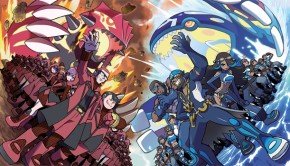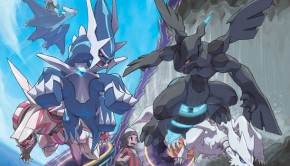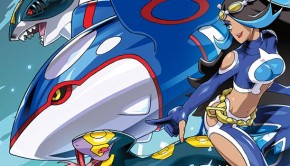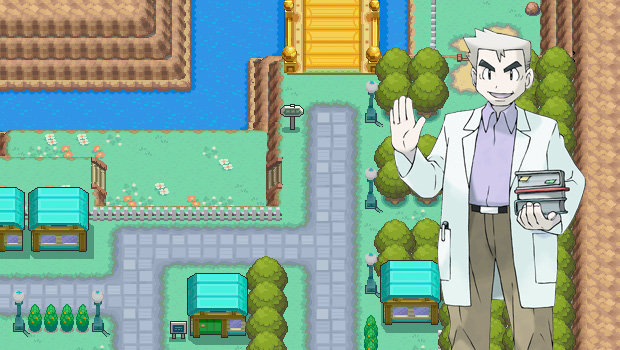A Tribute to the Hardcore: Iron Man of 1985
Hax aside, the Video Game Championships have really made a name for themselves as the premiere venue for showcasing and discovering the best of the best in competitive Pokémon. But winning a tournament isn’t the only way players in the past have proven their dedication to a given game. As a fun history tribute, I’m going to talk today about the Twin Galaxies Iron Man of 1985, an endurance competition that, at the time, was its own premiere event for gaming.
As a little bit of background information, Twin Galaxies is an organization that specializes in game world records, especially of the arcade variety, and the Iron Man of 1985 was one of their better known events. The rules were simple: you played an arcade game, and you lost if you Game Overed, reached a kill screen, or stopped playing, willingly or unwillingly. In short, it was all about how long you could drag out your one run. But lasting longer than anyone else wasn’t a draw in and of itself; the true winners, as they intended, were the ones that could play for 100 hours straight. Anyone who could do that would receive $10,000, which was a ton of money back then (and, let’s be fair, it’s still a good amount now).
It wasn’t as simple as just nonstop playing; you had to be so good that you could last 100 hours without Game Overing, but you also couldn’t excel at the game so quickly that you would end the game via a kill screen. And not only that, but you had to let bodily needs like sleep and food take a backseat while you did your thing. Those that did this were truly hardcore, and this aspect of the competition was what made players truly remembered for this competition.
Anyone who does a quick Google search can know the results of the competition, so I’ll keep it brief with the main highlights. A player named Tom Asaki, who lost after playing 24 hours of a game of Nibbler, lost to a glitch in the game. Put simply, each extra life was stored as a single byte in the Extra Lives data. Because of that, reaching 128 extra lives would cause the game to erroneously interpret life count as negative one – a flaw on the designer’s part, but a reasonable one considering they only ignored this assuming no one would ever play that long and get that many extra lives. But, at a score of over 300,000,000 points, Asaki was forced out of the game — game over is a game over. Players didn’t exactly have sympathy, especially considering another big name, Billy Mitchell, warned him this was going to happen.
Mitchell was known as a bigshot of his time, most notable for repeated successful attempts and clutching the world record score for Donkey Kong (there’s a documentary about this which, barring a few factual errors, really captures some of the hardcore times of this era – and the importance of modesty). Mitchell lost after Asaki, having played so long that the oils in his hands broke down the trackball. He passed out from exhaustion while experts tried to repair the system, finishing his run with a total of thirty nine hours of play.
Although nobody actually made it to the 100 hour mark, the closest attempt was by James Vollandt, who played Joust for sixty seven and a half hours. The second place finisher, Jeff Peters, actually passed out at the fifty hour mark — but first place wasn’t good enough for Vollandt. He wanted the money.
He did everything in his power to keep himself awake, including but not limited to spraying himself in the face with freon. His game experienced malfunctions at one point, wiping out all 210 of his extra lives at the fifty eight hour mark. Not only did he persist and avoid a game over, but he also earned back forty of the extra lives before finally leaving the game voluntarily.
In a lot of ways, these gamers were similar to us; the dedicated called them hardcore, the outside world called them obsessed or addicted. How else would they get that good? But at this point, skill wasn’t enough. It took patience, physical stamina, and more than anything else, sheer willpower.
I brought up this story for two reasons: one, because history is cool (seriously, guys), and two, because I wanted to start a discussion: if Pokémon trainers decided to create an endurance competition as a modern adaptation of this tournament, who would be interested and what would it look like?
Discuss in the comments your own interpretations, or use this made up ruleset as an example:
- Pick a format players could enjoy for a long time and play with a partner, such as Battle Factory doubles.
- If a player stopped playing, willingly or unwillingly for any reason, both the player and the partner lost and were removed from the competition.
- Partners would communicate wirelessly, but would have to work together to accomodate each others’ needs, like going to the bathroom.
Depending on turnout, the organizers could rent a venue and charge admission, where the competition pays for itself and its prizes. Organizers could also pick a date where the trainers would already be collected together, like before or after Nationals for instance. Prizes would go to the overall winners of the endurance race, plus to the partners with the highest win streak to retain the competitive edge as well. Alternately, there could be an option where players who lose too many times would be removed, but that would break the spirit of the endurance competition.
What do you think, Nugget Bridge? If a challenge like this were hosted, would you enter? What format would be most desirable? And what’s the Pokémon equivalent?










